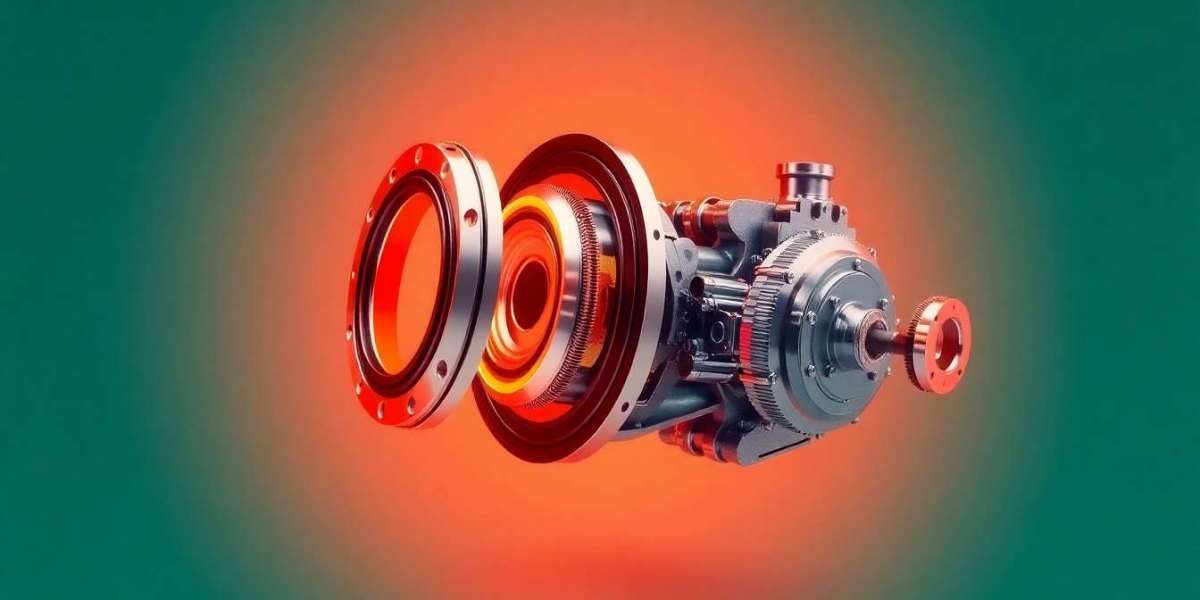Introduction: Why Mobile Hydraulic Repair Matters to You
Imagine this—you’re out on a busy construction site, and the excavator you rely on suddenly grinds to a halt. Hydraulic lines hiss, a faint smell of burnt oil lingers in the air, and your team is staring at a machine that refuses to lift, dig, or move. Deadlines loom, costs climb by the hour, and productivity grinds to a halt. In that moment, it’s not just a machine problem—it’s a business problem, and the only solution standing between you and downtime is mobile hydraulic repair.
When you think about hydraulics, you’re really talking about the heartbeat of modern machinery. From excavators and cranes to agricultural harvesters and mining equipment, mobile hydraulic systems are everywhere. And when they fail, you don’t always have the luxury of dragging heavy equipment to a service center. That’s why mobile repair solutions—technicians, tools, and knowledge that come to you—are so crucial.
In this guide, you’ll explore the ins and outs of mobile hydraulic repair. You’ll understand the types of failures that happen in the field, the tools and knowledge you need to fix them, and how innovations like servo motor drives, proportional hydraulic valves, and fluid sensors are shaping the future of repair work.
By the end, you won’t just understand what goes wrong—you’ll know how to prevent it, repair it, and keep your systems running at their best.
Understanding Mobile Hydraulic Systems
Before you can repair hydraulics, you have to understand them. At their core, hydraulic systems are about translating fluid pressure into mechanical work. Pumps push hydraulic fluid through hoses and valves, cylinders and motors convert that energy into motion, and the system cycles continuously.
In mobile equipment like excavators, skid steers, dump trucks, and cranes, these systems are compact, versatile, and powerful. Unlike stationary hydraulic setups in factories, mobile systems need to endure constant vibration, dirt, heat, and heavy-duty cycles. This makes their design robust—but also means they’re prone to specific kinds of wear and failure.
Key components you deal with include:
Hydraulic pumps (gear pumps, vane pumps, piston pumps, or even multi-stage/3-stage pumps)
Cylinders (single-acting, double-acting, telescopic, and custom types)
Valves (manual, electric hydraulic valves, proportional valves, and flow controllers)
Hydraulic fluid pump and reservoirs
Motors (for rotary actuation and driving wheels/tracks)
Hoses, seals, and hyd cylinder parts
When you’re repairing in the field, knowing these components and how they interact is critical. A faulty valve may mimic pump failure, a leaking cylinder seal may seem like a flow controller problem, and air in the system might cause erratic motion you could mistake for sensor failure.
Why Mobile Hydraulic Repair is Crucial for You
Hydraulic downtime isn’t just about a machine stopping. It ripples through an entire operation:
Lost productivity → Workers and jobsites sit idle.
Increased costs → Rental replacements or missed deadlines cost money.
Safety hazards → Hydraulic leaks or pressure failures can create dangerous situations.
Environmental risks → Fluid leaks contaminate soil and water.
Mobile repair solves these problems by bringing expertise directly to the equipment’s location. You don’t waste time towing machinery, and technicians can often identify and solve issues faster because they see the equipment in its working environment.
For industries like construction, agriculture, forestry, oil and gas, and logistics, this service isn’t a luxury—it’s a necessity.
Common Hydraulic Failures and Troubleshooting
When you face hydraulic breakdowns, they usually fall into certain predictable categories. Let’s walk through them the way you’d experience them on-site:
1. Hydraulic Leaks
You notice puddles forming under the machine or hoses glistening with oil. This often means:
Worn-out seals in hydraulic cylinders.
Loose fittings or cracked hoses.
Damaged pump housings.
In mobile repair, your job is to trace the leak, clean it, and confirm whether it’s a simple seal replacement or a deeper crack requiring part replacement.
2. Loss of Power or Pressure
The machine feels sluggish, can’t lift loads, or moves slower than usual. Causes may include:
Pump wear (gear, vane, or piston pump types).
Blocked filters restricting flow.
Cavitation (air bubbles damaging the pump).
Troubleshooting here means checking pressure gauges, inspecting filters, and listening for tell-tale noises in pumps.
3. Overheating Hydraulic Fluid
If fluid smells burnt or feels hotter than usual, it could signal:
Excessive friction from dirty oil.
Wrong fluid type or viscosity.
Malfunctioning cooling systems.
Mobile repair means draining contaminated fluid, cleaning reservoirs, and replacing filters before heat causes permanent damage.
4. Erratic Movements
Booms jerking, cylinders drifting, or motors stalling usually point to:
Air in the system.
Faulty proportional hydraulic valves.
Problems with the hydraulic flow controller.
Mobile diagnosis often involves bleeding the system and testing valves electrically and hydraulically.
5. Complete System Failure
When the machine won’t respond at all, look for:
Pump shaft breakage.
Electrical failure in electric hydraulic valves.
Servo motor drive malfunctions.
In the field, your challenge is to quickly separate mechanical issues from electrical or control-related ones.
Core Components You’ll Repair in the Field
Mobile hydraulic repair is less about replacing entire systems and more about targeted fixes. Let’s explore the components you’ll work with most often:
Hydraulic Pumps: Gear pumps (simple, rugged), vane pumps (efficient, used in medium-pressure systems), piston pumps (variable displacement, high power). You might even see specialized setups like a hydraulic screw pump or a 3 stage hydraulic pump in demanding applications.
Cylinders: Understanding hydraulic cylinder types—from single-acting dump truck cylinders to double-acting loader arms—helps you know which hyd cylinder parts (rods, seals, end caps) fail most often.
Valves: Mobile systems increasingly use electric hydraulic valves and proportional hydraulic valves. These allow smoother motion and remote control but also introduce electronic troubleshooting into your repair routine.
Motors: Often overlooked, but a hydraulic motor failing means zero rotation. Many technicians use resources like the Vickers vane pump catalogue (PDFs) or hydraulic motors suppliers’ data to identify replacements.
Flow Controllers: A hydraulic flow controller or a pneumatic proportional flow control valve regulates speed. Failures here can make equipment unsafe.
Each component has its quirks, and mobile repair requires knowing when to swap a seal, when to rebuild, and when to recommend replacement.
Step-by-Step Mobile Repair Scenarios
To make this real, let’s walk through two typical repair stories you might face:
Scenario 1: Excavator with a Dead Boom
You arrive, and the operator says the boom won’t lift. You check for leaks—none. Next, you test pressure—low. Tracing the circuit, you find the proportional valve is stuck partially closed due to contamination. Cleaning and recalibrating restores full function within hours.
Scenario 2: Agricultural Harvester Losing Power
On a farm, a combine harvester keeps slowing down under load. You inspect the piston pump types in the system and realize cavitation is eating away at pump efficiency. You flush the system, replace the pump, and advise the farmer on fluid filtration upgrades.
Both cases show that repair isn’t just about fixing—it’s about diagnosing under pressure, making the right call, and preventing the same issue from recurring.
Tools & Techniques in Mobile Hydraulic Repair
When you’re out in the field, you don’t have the luxury of a full workshop. That’s why mobile hydraulic repair technicians carry specialized tools:
Portable diagnostic kits with gauges and electronic testers.
Seal kits and hyd cylinder parts for quick replacements.
Fluid sampling kits to check for contamination.
Mobile lifts and safety equipment.
Access to digital manuals like the Vickers vane pump catalogue PDF for on-site reference.
The rise of IoT-enabled components means technicians increasingly use laptops and tablets to interface with valves, drives, and controllers. This blend of mechanical skill and digital savvy defines modern repair.
The Role of Technology in Hydraulic Repair
Mobile hydraulics aren’t just mechanical anymore—they’re smart. Advances include:
Servo Motor Drives: These integrate with pumps for variable flow and pressure, increasing efficiency but adding electronic repair needs.
Proportional Valves: Fine-tuned, electronically controlled valves that require diagnostic software in addition to wrenches.
Sensors & Controllers: Position sensors, flow controllers, and telematics feed real-time data. When they fail, troubleshooting shifts from oil stains to signal traces.
Pneumohydraulic Drive Applications: Combining air and hydraulics, these systems demand a broader knowledge base for repair.
You, as the technician, become a hybrid expert—part mechanic, part electrician, part software troubleshooter.
Future of Mobile Hydraulic Repair
Looking ahead, mobile repair will continue evolving. You’ll likely see:
Remote diagnostics where machines report failures before you arrive.
Predictive maintenance powered by AI analyzing sensor data.
Eco-friendly fluids and seals reducing environmental impact.
More integration of electric hydraulic valves in hybrid machines.
Global networks of hydraulic motors suppliers and repair services sharing parts and expertise faster.
The technician of tomorrow won’t just fix breakdowns—they’ll keep fleets running predictively, sustainably, and efficiently.
FAQs
Q1: What is mobile hydraulic repair?
Mobile hydraulic repair is the process of diagnosing and fixing hydraulic system problems directly at the machine’s location, without transporting it to a service center. It saves time, reduces downtime, and is critical for industries where heavy equipment is too large to move.
Q2: How do you troubleshoot hydraulic system problems?
Troubleshooting begins with symptoms—leaks, power loss, overheating, or erratic movement. You check fluid levels, test pressure, inspect valves and pumps, and isolate whether the issue is mechanical, hydraulic, or electronic. Step-by-step, you eliminate possible causes until the root problem is clear.
Q3: What types of hydraulic pumps are used in mobile systems?
You’ll encounter gear pumps (rugged, low cost), vane pumps (efficient, medium-duty), piston pumps (variable displacement, high power), screw pumps (for niche applications), and sometimes multi-stage pumps for high-pressure needs.
Q4: Why do hydraulic cylinders fail?
Most often, cylinders fail due to seal wear, rod scoring, or contamination inside the cylinder. Knowing the different hydraulic cylinder types helps in predicting which failures are most likely in a given application.
Q5: How important are electric hydraulic valves in mobile systems?
They’re becoming central. Electric valves and proportional valves allow precise motion control and remote actuation. However, when they fail, repair requires electrical diagnostics as well as hydraulic know-how.
Q6: Can mobile hydraulic repair handle complex failures like servo motor drive issues?
Yes, but it requires advanced technicians with both mechanical and electronic expertise. Modern repair vans carry diagnostic laptops alongside traditional hydraulic tools.
Q7: What role do suppliers play in repair?
Hydraulic motors suppliers, cylinder part vendors, and companies like THM Huade ensure technicians have access to genuine replacement parts, manuals, and updated components that keep repairs effective and lasting.
Conclusion
When your hydraulic system fails on-site, it’s more than an inconvenience—it’s a threat to productivity, safety, and profitability. Mobile hydraulic repair steps in as your lifeline, combining mechanical knowledge, electronic diagnostics, and real-world problem-solving to get machines back to work.
From pumps and valves to cylinders and motors, the repair process isn’t just about replacing parts—it’s about understanding the system as a whole. As you’ve seen, innovations like servo motor drives, proportional valves, and pneumatic-hydraulic hybrids are shaping the future of repair.
With expertise, the right tools, and the backing of reliable suppliers like THM Huade, mobile hydraulic repair becomes not just a service, but a strategy for keeping your operations strong, safe, and efficient.














